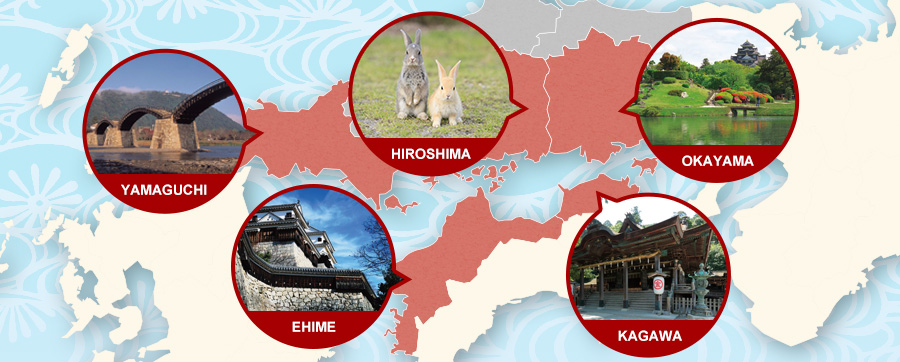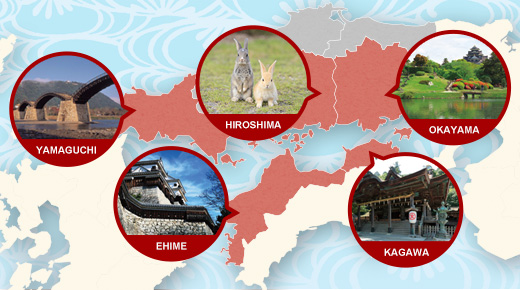Setouchi Area Spot
Okayama Area
-
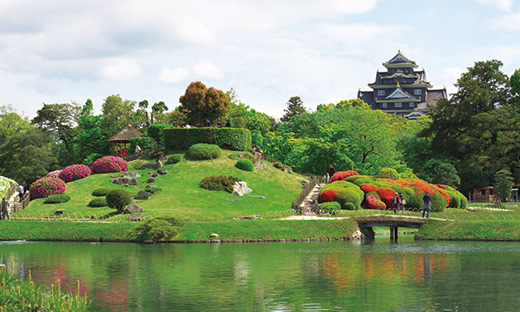
Okayama Korakuen
Korakuen, one of the three most famous gardens in Japan, is a stroll garden with a central pond built by the domain lord, Tsunamasa Ikeda, in 1700. It is a hallmark of gardens in the Edo period (1603-1868). Throughout the year you can enjoy a variety of flowers including Japanese plum blossoms, cherry blossoms, and azaleas.
Access: 4minutes on the train bound for Higashiyama from Okayama Station. Get off at Shiroshita Station and walk 10 minutes. Opening hours: March 20 - September 30: 7:30 am - 6:00 pm (Admission until 5:45 pm), October 1 - March 19: 8:00 am - 5:00 pm (Admission until 4:45 pm) Admission fee: Adults: ¥410, Seniors: ¥140 (65 and older), High school students and younger: Free Closed: No closing days Address: 1-5 Korakuen, Kita-ku, Okayama -
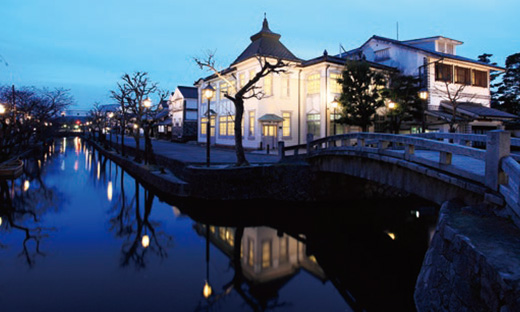
Kurashiki Bikan Historical Quarter
Kurashiki Bikan Historical Quarter is a distinctive must-see spot in Okayama that attracts large numbers of tourists a year.
A line of time-honored storehouses with white walls and namako walls (walls with grid patterns) stand along the river.
During the Edo period (1603-1868), Kurashiki prospered as “Tenryo,” a domain directly governed by the shogunate, and a cityscape reminiscent of that past is preserved here. A number of alleys run through the quarter, each alley presenting you with a different face of the city that you can enjoy.Access: About a 10-minute walk from Kurashiki Station.
* Night illumination: April - September: Sunset - 10:00 pm, October - March: Sunset - 9:00 pmOpening hours: 9:00 am - 6:00 pm Closed: December 29 to January 3 Address: 2-23-18 Achi, Kurashiki -
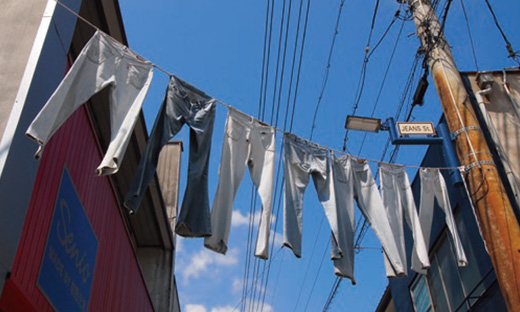
Jeans Street
Kojima, in Kurashiki, Okayama, is the birthplace of Japan’s domestic jeans. Kojima Jeans Street, with numerous current manufacturers, is home to many shops selling Japanese jeans. Many specialty goods can also be found here, from cushions made out of recycled jeans to denim book covers.
Access: Jeans Street: About a 15-minute walk from Kojima Station, or 1 minute from Kojima Bunka Center Mae on the Shimoden Bus. -
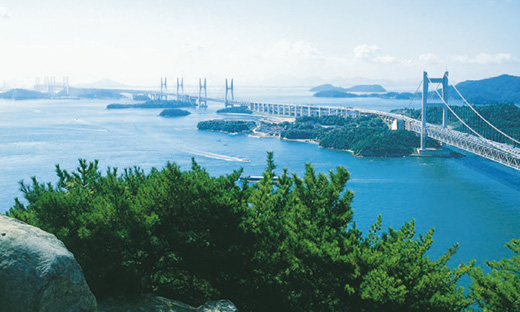
Seto Ohashi Bridge (Washuzan Observatory)
The Seto Ohashi Bridge is a collection of 6 bridges that passes through an exquisite archipelago in the Seto Inland Sea. From Washuzan Observatory, visitors can look out over more than 50 beautiful islands of varying size scattered across the tranquil waves of the sea and enjoy a majestic sight of the Seto Ohashi Bridge. With an exceptionally beautiful sunset, this area has been selected as one of Japan’s 100 best sunset locations.
Access: Washuzan Observatory: About 10 minutes by car from Kojima Station. -
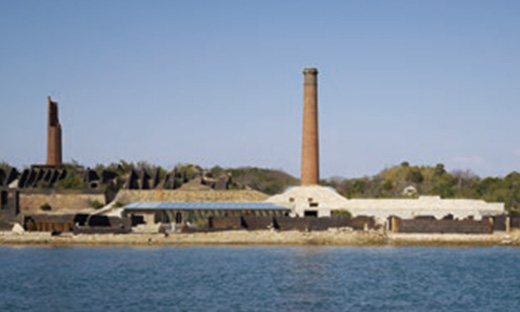
Inujima Island
This is the only inhabited island in the Okayama City. Its unique landscape includes remnants of a copper smelter. After an art museum opened in 2008 and the Art Setouchi Festival was held here in 2010, it became known as the “island of arts.” Inujima is renowned for its atmosphere of great charm.
Access: At Saidaiji Station, board the Ryobi Bus and get off at Nishi-hoden. Walk about 1 minute to the Ferry Terminal. It’s a 10-minute ride on the Akebono Maru ferry. Akebono Maru ferry schedule: First departure from Hoden Port: 6:25 am. Last departure from Inujima Port: 6:45 pm (5:15 pm on Sundays) One-way fares on the Akebono Maru ferry: Adults: ¥300, children: ¥150 Address: Inujima, Higashi-ku, Okayama -
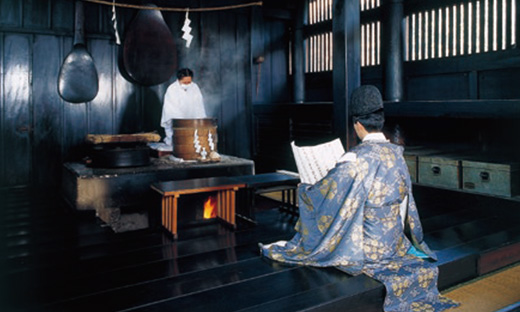
Kibitsu Shrine
This ancient shrine built to enshrine Kibitsuhikonomikoto is said to have been the inspiration for Momotaro, or “Peach Boy.” The highlights include the magnificently elegant Main Hall and the Hall of Worship (both of which are recognized as National Treasures). It is also famous for the Narukama Shinji Ritual, the practice of telling fortunes from the sound of a kama (kettle).
Access: A 10-minute walk from Kibitsu Station Opening hours: Worship: 5:00 am – 5:30 pm; Prayer: 8:30 am – 4:00 pm Closed: Narukama Shinji rituals are not held on Friday (Narukama Shinji Ritual reception desk: 9:00 am - 2:00 pm) Address: 931 Kibitsu, Kita-ku, Okayama Contact: info@kibitujinja.com -
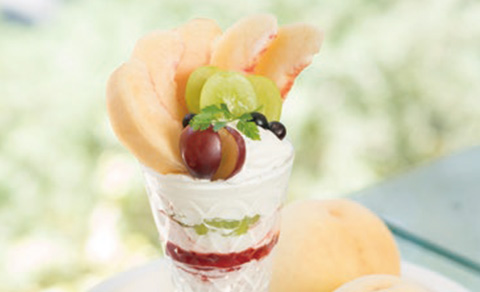
Fruit Parfait
Okayama—known as the “Land of Sunshine”—enjoys a mild climate where fruits grow throughout the year, earning this region the title of “Fruit Kingdom.” From white peaches to Pione grapes to strawberries, Okayama’s fruit parfaits are a must-eat for any traveler looking to enjoy the various fruit each season has to offer. Fruit season also sees a wide variety of fruit-picking options at local tourist farms.
Hiroshima Area
-
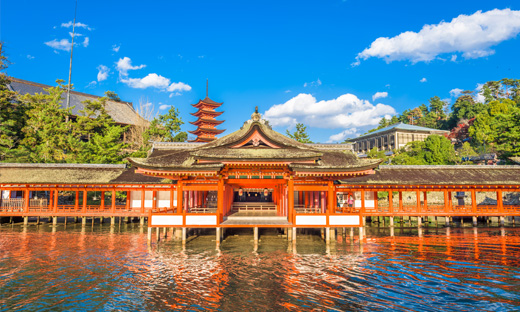
Itsukushima Shrine
Together with its great vermillion gate (torii), the shrine is listed as a World Heritage Site. An original group of magnificent shrine buildings was constructed in the Heian period (794-1185) on the order of Taira no Kiyomori (Kiyomori Taira). The great shrine gate has a four-legged structure and is made of camphor wood. The current gate was built in 1875 (Meiji period) and is the eighth one in its long history.
Access: From Miyajimaguchi Station, it’s about a 6-minute walk to Miyajimaguchi Sanbashi (Pier), and then about 10 minutes by ferry to Miyajima Sanbashi (Pier). The shrine is about a 10-minute walk from the pier. Opening hours: Generally 6:30 am - 6:00 pm Admission fee: Adults: ¥300,
Senior-high school students: ¥200,
Elementary and junior-high school students: ¥100Closed: No closing days Address: 1-1 Miyajima-cho, Hatsukaichi, Hiroshima -
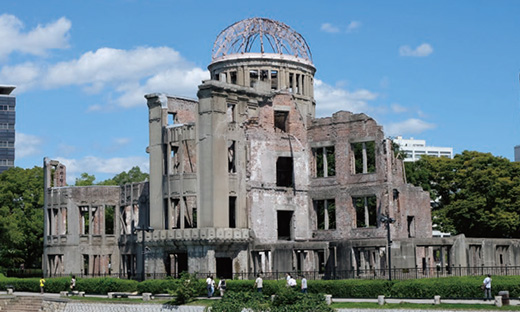
A-bomb Dome
With only crumbling exterior walls stripped to its bare iron frames by the atomic bomb blast, the former Hiroshima Prefectural Industrial Promotion Hall building remains standing in the shape of semicircular dome. Inscribed as a World Heritage Site in December 1996, the building exemplifies the damage from and the aftermath of A-bomb explosion. It is now a symbol of the pledge to totally abolish nuclear weapons and strive for permanent peace.
Access: From Hiroshima Station, take the Hiroshima Electric Railway to Genbaku Dome-mae, or take the “Meipuru-pu” bus to Genbaku Dome-mae from the Shinkansen Gate of Hiroshima Station (13 min.) 〈Hiroshima Peace Memorial Museum〉
Opening hours: March - July: 8:30 am - 6:00 pm, August: 8:30 am - 7:00 pm (8:00 pm close on Aug. 5 and 6), September - November: 8:30 am - 6:00 pm, December - February: 8:30 am - 5:00 pm (Admission until 30 min. before closing) Admission fee: Adults: ¥200, Senior-high school students: ¥100,Elementary and junior-high school students or younger: Free Closed: December 29 to January 1 Address: 1-2 Nakajima-cho, Naka-ku, Hiroshima Contact: 082-241-4004 -
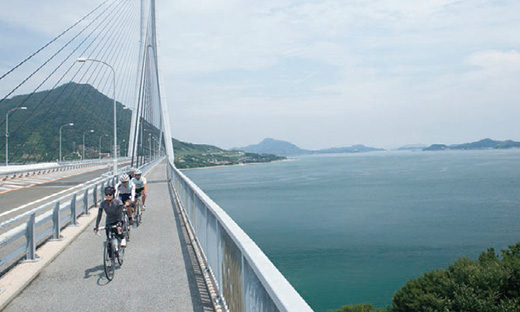
Setouchi Shimanami Kaido
The Setouchi Shimanami Kaido, connecting Hiroshima and Ehime with nine bridges, can also be crossed on bicycle (toll-free). Along this “cyclist’s paradise,” cyclists can look out over the beautiful sea and islands on bridges that give the impression of flying through the sky. A bicycle rental system is also available.
Onomichi Station Rent-A-Cycle
Access: Onomichi Station Opening hours: March - November: 7:00 am - 7:00 pm.
December - February: 8:00 am - 6:00 pm.Fee: Electric bicycles are ¥2,500 per day with a deposit of ¥1,100 for adults and ¥500 for children 12 and under.
Other bicycles are ¥2,000 for adults and ¥500 for children 12 and under with a deposit of ¥1,100 for adults and ¥500 for children 12 and under.Address: Higashi Gosho-cho, Onomichi Contact: Shimanami Japan 0848-22-3911 (Closed for New Year’s holiday) -
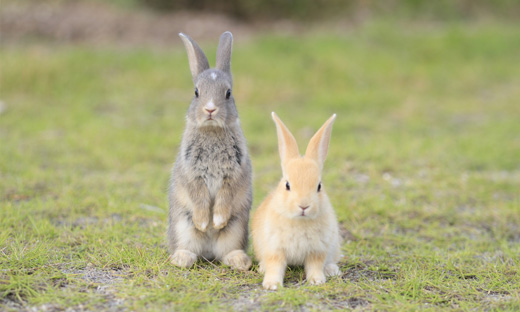
Okunoshima (Rabbit Island)
This small island sits in the Seto Inland Sea. About 700 rabbits live on the island. Here you can enjoy a variety of activities, including cycling, fishing, and soaking in hot springs.
Access: A 7-minute walk from Tadanoumi Station, 12 minutes by boat from the Tadanoumi Port National Park Resort Okunoshima
Opening hours: 7:00 am – 9:00 pm Closed: No closing days (Occasionally closed for renovations.) Contact: 0846-26-0321
* The last boat for Tadanoumi departs at 6:40 pm. -
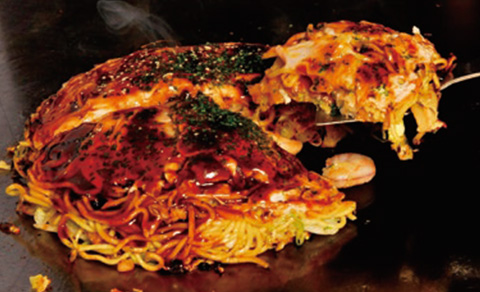
Okonomiyaki
Hiroshima’s beloved okonomiyaki is a grilled dish made with wheat-flour dough spread in a circle on an iron skillet then topped with cabbage, bean sprouts, pork, yakisoba, and egg. The enjoyable texture of the vegetables and the noodles make this one of Hiroshima’s comfort foods.
Price:¥500 - ¥1,000 -
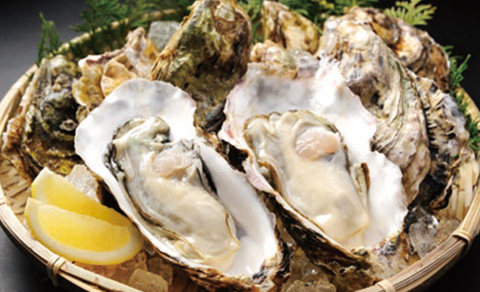
Oysters
In Hiroshima, oysters are the flavor of winter. Oysters from Hiroshima, an area that claims the No. 1 title for oyster production, are thick with a rich taste. Hiroshima oysters are good not only grilled but also in Japanese, Western, and Chinese cuisine. Come and find the preparation method that suits you!
-
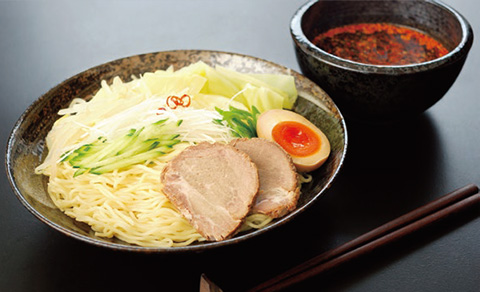
Hiroshima Noodles with Dipping Broth
Hiroshima noodles with dipping broth are noted for their heaping servings of crisp cucumber, boiled cabbage, green onions and other vegetables in a spicy pepper-and-sesame broth. This unique and popular Hiroshima dish is sure to become one of your spicy favorites.
Price:¥700-¥800 per dish
Yamaguchi Area
-
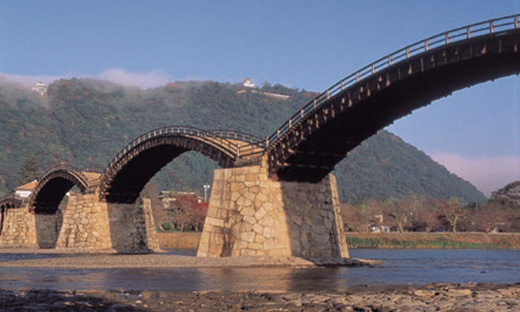
Kintaikyo Bridge
Kintaikyo Bridge was built in 1673 by Hiroyoshi Kikkawa, the third lord of the Iwakuni Domain, and the current bridge is the fourth generation of the structure. Spanning the clear waters of the Nishiki River, this 193.3 m long and 5 m wide bridge is composed of five wooden arches. Kintaikyo Bridge is supported by a structure of interwoven wood and uses metal bindings and clamps.
Access: 20 minutes by bus from Iwakuni Station Opening hours: Open 24 hours Admission fee: Adults: ¥310, Children: ¥150* Group discounts available. Address: 1 Chome Iwakuni, Iwakuni, Yamaguchi Contact: Iwakuni Tourism Promotion Division, 0827-29-5116 -
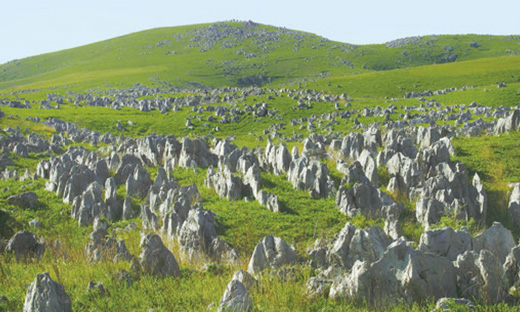
Akiyoshidai Plateau
Surrounded by 500 to 600 m tall mountains, Akiyoshidai Plateau is a basin-shaped plateau. At an elevation of between 180 and 420 m, this plateau consists mainly of Paleozoic limestone and features numerous rainwater-formed limestone caves scattered underground. Akiyoshidai Plateau has been designated a Special Natural Monument of Japan.
Access: 40 minutes by bus from Shin-Yamaguchi Station to Akiyoshi-do bus stop, then about a 30-minute walk Address: Akiyoshi, Shuhocho, Mine, Yamaguchi Contact: General Tourism Division of Mine City, 0837-62-0305 -
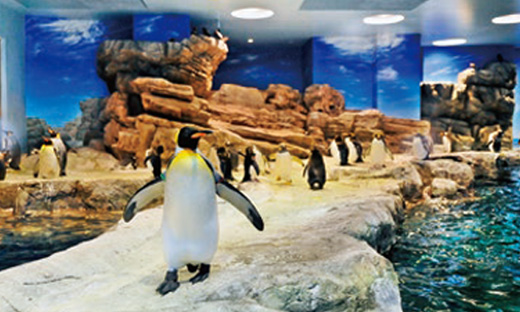
Kaikyokan Aquarium
This world-class aquarium features Japan’s first blue whale skeleton exhibition boasting a 23 m long skeleton, “Penguin Village” featuring Japan’s largest penguin exhibit facility, and “Pufferfish Corner,” home to Shimonoseki’s most popular fish species. Kaikyokan Aquarium is chock-full of one-of-a-kind exhibits, including the roughly 900-ton “Kanmon Kaikyo Straits Tidal Water Tank” and a sea lion show set against the Kanmon Kaikyo Straits.
Access: 5 minutes by bus from Shimonoseki Station to Kaikyokan-mae bus stop and then a 2-minute walk, or a 4-minute walk from Karato bus stop Opening hours: 9:30 am – 5:30 pm (Admission until 5:00 pm) Closed: No closing days Admission fee: Adults: ¥2,090,
Elementary and junior high school students: ¥940,
Children (3 and older):
¥410 * Group discounts available.Address: 6-1 Arcaport, Shimonoseki, Yamaguchi Contact: Kaikyokan Aquarium, 083-228-1100 -
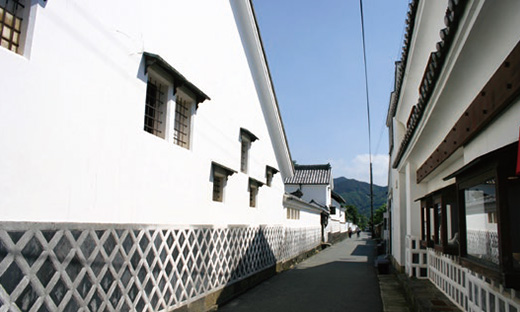
Hagi
Referred to as a large museum with no roof, the city of Hagi features a number of historical and cultural assets and is dotted with old-style castle town streets. Take an enjoyable stroll and experience the foundations of Japanese modernization, said to be a miracle of world history from the end of the 19th century.
Address: Hagi, Yamaguchi -
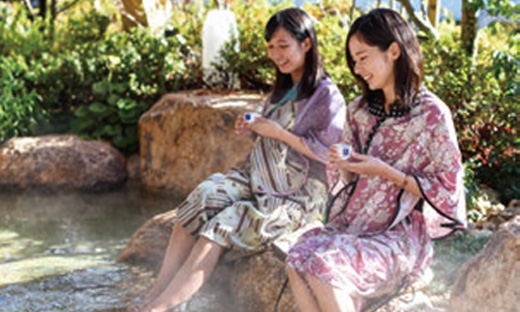
Yuda Onsen (Hot Spring)
This well-known hot spring boasts the largest amount of hot water along the Sanyo Road. The soft, hot water of Yuda Onsen, a simple alkaline hot spring fueled by an ancient hot spring with history stretching back to the Muromachi Era, is easy on the skin. Legend has it that an injured white fox soaked in this hot spring to heal his wound.
Access: A 5-minute walk from Yudaonsen Station, or 15 minutes by bus from Shin-Yamaguchi Station to Yuda Onsen Address: Yuda Onsen, Yamaguchi Contact: Yuda Onsen Ryokan
Association, 083-920-3000 -
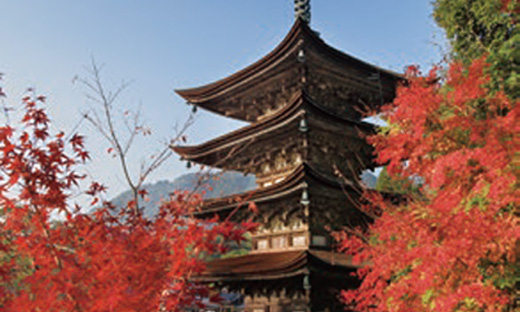
Ruriko-ji Temple Five-Storied Pagoda
Counted among Japan's three great pagodas for its beauty, this is Japan's tenth oldest existing open-air five-storied pagoda and has been described as one of the most superior buildings to be created during the Muromachi Era. The pagoda is illuminated for a few hours every day after sunset.
Access: 15 minutes by bus from Yamaguchi Station Address: 7-1 Kozancho, Yamaguchi Contact: Yamaguchi City Tourism Bureau, 083-934-2810 -
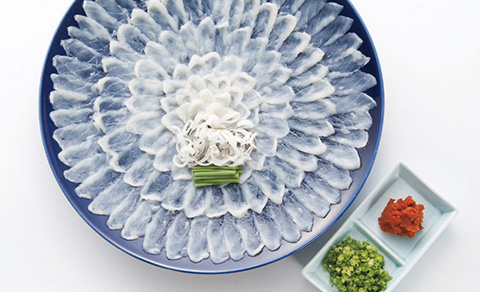
Fuku (pufferfish)
In Shimonoseki—which handles Japan’s largest volume of pufferfish— pufferfish is known as fuku in honor of the Japanese word for luck rather than the common Japanese word fugu. Selected by connoisseurs, matured by handlers to a state of highest quality, and prepared with a pride in skill, pufferfish boasts a truly blissful flavor. There’s no better place for fuku than Yamaguchi, the home of pufferfish!
Season: Early September to late March
Ehime Area
-
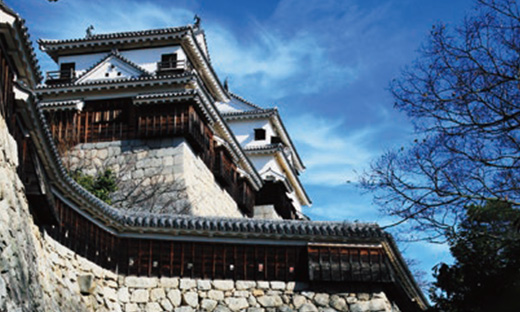
Matsuyama Castle
Matsuyama Castle is one of only twelve places in Japan with a keep that was built before the Edo Period. With its 360-degree panoramic scene, the view from the main tower isn’t one to miss!
Access: About a 5-minute walk from Okaido Station. Opening hours: Ropeway and chairlift: 8:30 am - 5:30 pm, Tenshu (Main Tower): 9:00 am - 5:00 pm (varies by season) Fee: Ropeway and chairlift - Adults (round-trip): ¥520, Tenshu Adult Admission Set: ¥1,040 Closed: Ropeway and chairlift are open everyday. Tenshu is closed on the third Wednesday of December. Address: 3-2-46 Okaido, Matsuyama Contact: 089-921-4873 -
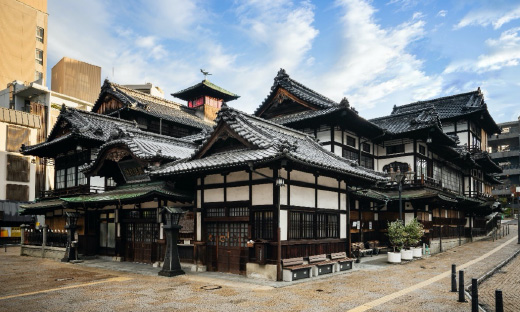
Dogo Onsen Honkan
Dogo Onsen is said to be Japan’s oldest hot spring, boasting approximately three thousand years of history. Its symbolic main building Dogo Onsen Honkan is a designated important cultural property and received three Michelin stars—the top rating—in Michelin Green Guide Japan in 2009.
Access: A 5-minute walk from Dogo Onsen Station Opening hours: 6:00 am - 11:00 pm (Last entry: 10:30 pm) Bathing fee: ¥460 Closed: Closed one day in December (not specified). Address: 5-6 Dogoyunomachi, Matsuyama Contact: 089-921-5141 -
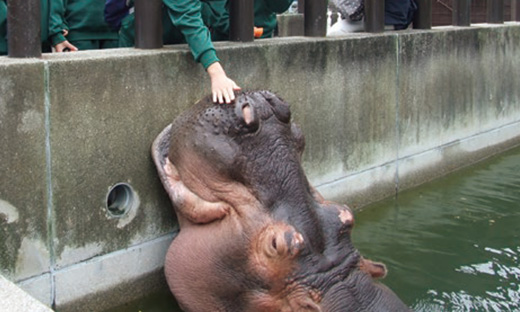
Tobe Zoo
With the title of Western Japan’s largest zoo, Tobe Zoo houses roughly 786 animals for a total of about 167 species. The zoo is packed with exhibits where viewers can see animals in action up close and personal, including the “Chimpanzee Forest” and an exhibit with penguins flying through the water.
Access: About 35 minutes by transit bus from Matsuyama City Station (No. 3 bus stop), then a 10-minute walk from Tobe Dobutsuen Mae bus stop. Opening hours: 9:00 am - 5:00 pm (Admission until 4:30 pm) Admission fee: Adults (non-students 18 and older): ¥500, Seniors (65 and older; Proof of age required): ¥200, High school students (15 – 17 years old): ¥200, Elementary and junior high students (6 – 14 years old): ¥100, Children (younger than 6 years old): Free, Individuals assisting the handicapped: Free Closed: Mondays (unless Monday is a holiday),
New Year’s Holiday: December 29 to January 1Address: 240 Kamiharamachi, Tobe-cho, Iyo-gun Contact: 089-962-6000 -
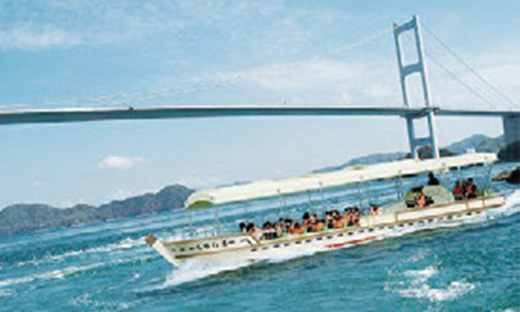
Tidal Current Experience Cruise on the Kurushima Strait
Kurushima Strait has one of the three fastest tidal currents in Japan. Visitors can experience intense tidal rapids of up to 10 knots at close range.
Access: Take the bus from JR Imabari Station and get off at Kameyama. Take the Island Bus Hayakawa – Miyakubo – Shitadami Line for 4 minutes. Get off at Shitadami. Opening hours: 9:00 am – 4:00 pm (Closed at 3:00 pm on 12/31.) Fare: Adults: ¥1,500, children (12 years old and younger): ¥1,000, Children younger than elementary school age: Free (so long as the number of children does not exceed the number of adults) Closed: January 1 *Only group (5 people or more) reservations accepted from December to February. Address: 4520-2 Yoshiumichomyo, Imabari Contact: Service Area Yoshiumi Iki-Iki-Kan, 0897-84-3710 (9:00 am – 5:00 pm) -
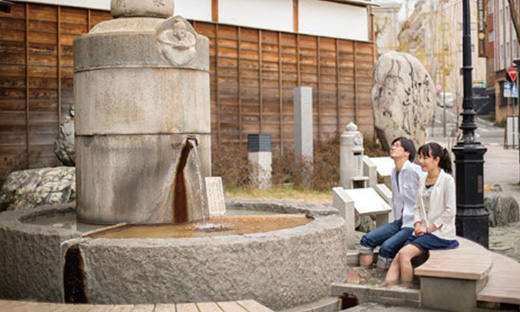
Hojoen Foot Spa
Hojoen Garden is located opposite Dogo Onsen Station. Here you can view the Botchan Karakuri mechanical clock and enjoy a free footbath at Japan’s oldest hot spring.
Access: Just close to Dogo Onsen Station Opening hours: 6:00 am – 11:00 pm Admission fee: Free Closed: No closing days Location: Dogo-Yunomachi Contact: Matsuyama City Tourism and International Affairs Division,
089-948-6558 -
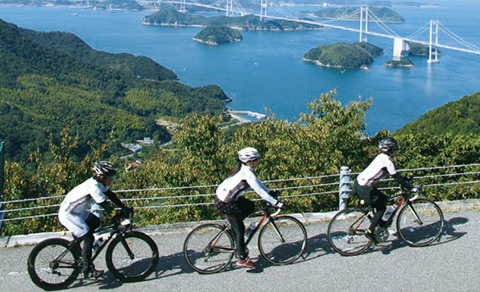
Central Rent-A-Cycle Terminal
(Sunrise Itoyama)Access: About 22 minutes from JR Imabari Station via bus, then a 1-minute walk from the Tenbodai-Iriguchi bus stop. Opening hours: 8:00 am - 8:00 pm (April - September), 8:00 am - 5:00 pm (October - March) Fee: Adults:¥1,100/day, Children (12 years old and younger): ¥300/day
[Deposit] Adults: ¥1,100, 12 years old and younger: ¥500Closed: No closing days Address: 2-8-1 Sunaba-cho, Imabari, Ehime Contact: 0898-41-3196 JR Imabari Station Temporary Rent-A-Cycle Terminal
Access: Right next to JR Imabari Station Opening: 8:30 am - 5:00 pm Fee: Adults:¥1,100/day, Children (12 years old and younger): ¥300/day
[Deposit] Adults: ¥1,100, 12 years old and younger: ¥500Closed: No closing days Address: 1-6-23 Nakahiyoshi-cho, Imabari Contact: 0898-34-1200 -
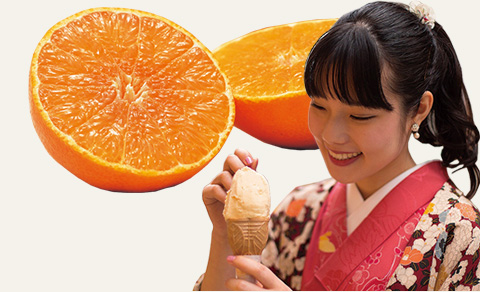
Citrus Fruits
A lot of citrus fruit is grown in Ehime Prefecture—it’s said to be Japan’s “citrus kingdom.” Many different types of citrus fruits can be found here, including “Beni Madonna” and Matsuyama’s own “Miyauchi Iyokan.” Ehime is also famous for its abundance of processed goods using citrus fruits, including gelato and jellies. Visitors can also enjoy the many fruit stands available.
Kagawa Area
-
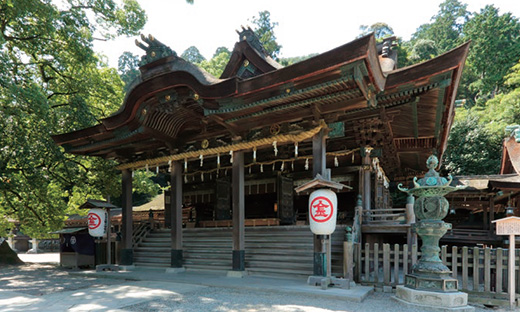
Konpira Shrine
Also known as Konpirasan, this shrine is dedicated to the god of seafaring, Konpira. Along the stone steps leading from the approach to the rear shrine, visitors can see the main gate (Daimon), the treasure hall (Homotsu-kan), the five raditional vendors (Gonin Byakusho, or the Five Farmers), the drawing room (Shoin), the Asahi-no-Yashiro hall, and the main temple (Shinden), three locations that house important Japanese cultural properties.
Access: About a 20-minute walk from Kotohira Station. Opening hours: Front drawing room (Omote Shoin) and Homotsu-kan: 8:30 am - 5:00 pm (Admission until 4:30 pm) Admission fee: Free Closed: No closing days Address: 892-1 Kotohira-cho, Nakatado-gun, Kagawa Contact: 0877-75-2121 -
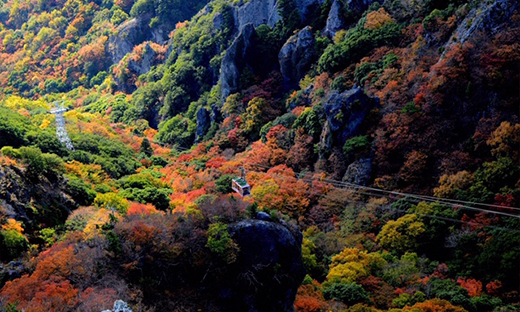
Shodoshima (Kankakei Gorge)
The Kankakei Gorge, a magnificent scenic area consisting of twelve “Front Side” landmarks and eight “Back Side” landmarks, is referred to as one of Japan’s three most beautiful valleys and is the symbol of the Setonaikai National Park. Adding to the natural formative beauty of the gorge’s current formation, each season comes with a splash of color from the native plants, bringing about another level of beauty to the valley.
Kankakei Ropeway
Access: From Tonosho Port, about 30 minutes by bus to Kusakabe Port on the Sakate Line / Southern Loop Fukuda Line (Outbound). Change to the Kamikake Line at Kusakabe Port, and get off at the terminus, Koun-Tei (about an hour’s ride). Admission fee: ¥1,100 (one way), ¥1,970 (round trip); Children: ¥550 (one way), ¥990 (round trip) Address: Sancho Station: 168 Kankakedori, Shodoshima-cho, Shozu-gun, Kagawa; Koun Station: 327-1 Contact: 0879-82-2171 -
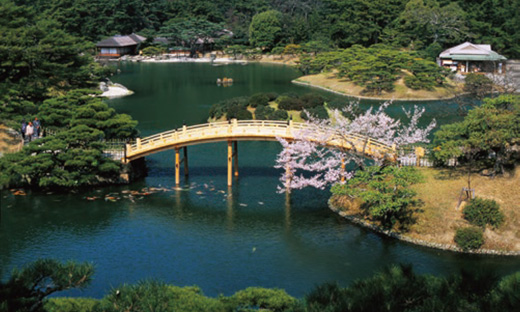
Ritsurin Garden
No matter where you go in this garden featuring six ponds and thirteen miniature hills, the water, greenery, and rocks interweave to form a landscape reminiscent of a famous scroll painting. This garden park has earned a high reputation both domestically and internationally, including a three-star rating in the “Michelin Green Guide Japan” travel guide.
Access: About a 3-minute walk from Ritsurinkoen-Kitaguchi Station. Opening hours: 7:00 am - 5:00 pm (varies monthly) Admission fee: Adults: ¥410, Children: ¥170 Group admission fees (for 20+ people): Adults: ¥330, Children: ¥140 Closed: No closing days Address: 1-20-16 Ritsurin-cho, Takamatsu Contact: 087-833-7411 -
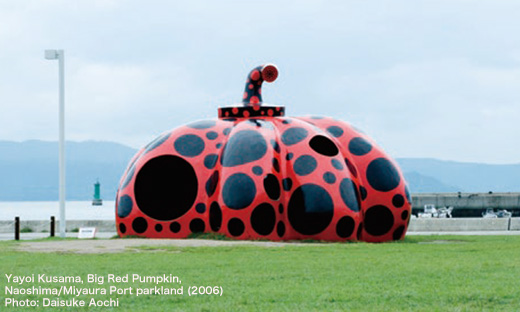
Naoshima Island
Naoshima is an island that blends art and nature. In addition to looking out over the numerous beautiful islands of the Seto Inland Sea, visitors can also enjoy the many examples of art dissolving into nature, including the Big Red Pumpkin sculpture, the Benesse House Museum, the Chichu Art Museum, and the Art House Project.
Access: About 50 minutes from Takamatsu Port to Naoshima (Miyaura Port) on the Shikoku Kisen Ferry. Contact: Naoshima Tourism Association, 087-892-2299 -
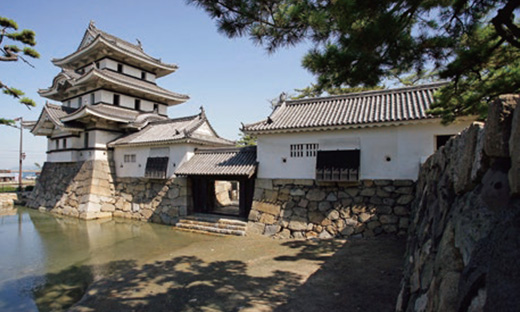
Tamamo Park
Tamamo Park was developed atop the ruins of Takamatsu Castle—one of Japan’s three main Mizushiro (water castles)—erected on the banks of a sea teeming with seabream. Adored by its neighbors, Tamamo Park sees a large number of tourists throughout the year. Come and enjoy the park’s leisurely pace!
Access: A 3-minute walk from JR Takamatsu Station Opening hours: 8:30 am – 5:00 pm (may vary depending on season) Admission fee: Adults: ¥200, children: ¥100 Address: 2-1 Tamamocho, Takamatsu, Kagawa Contact: 087-851-1521 -
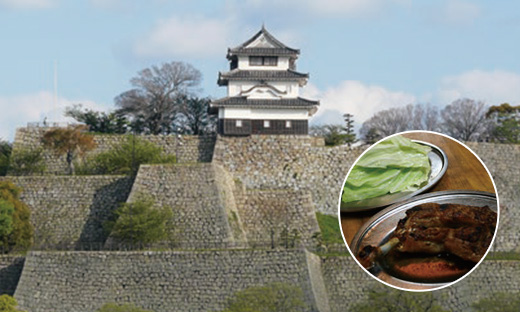
Marugame Castle
Marugame Castle is a nationally designated historic site and features the smallest existing wooden keep in Japan. Regarded as a stone castle, the castle is known throughout Japan for its stone castle walls. *Honetsuki-dori (grilled chicken on the bone) is a popular local gourmet dish that originated in Marugame City.
Access: A 10-minute walk from JR Marugame Station Address: Ichibancho, Marugame, Kagawa Contact: Marugame City Tourist Association, 0877-22-0331 -
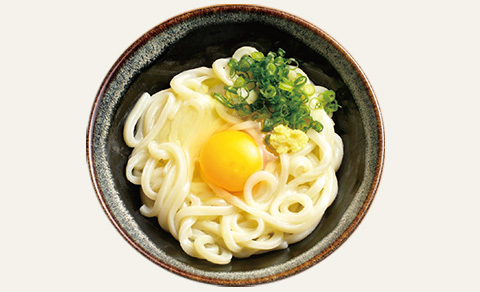
Udon
Kagawa Prefecture is synonymous with sanuki udon. Whether enjoying the taste of the noodles with pure soy sauce or savoring the mild tastes of kamatama udon, there are numerous ways to enjoy Kagawa’s thick udon. Some shops even offer customers a true homemade noodle experience.




